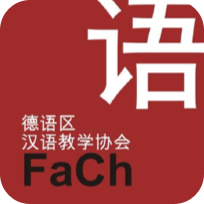Band 4
Karl, Ilse (Leitung)/Beutel, Helga/Richter, Gunnar/ Spies, Gottfried Chinesische Wortbildung
Studien zur Theoriebildung und Wortstrukturbeschreibung
In den Arbeiten von Mitarbeitern der ehemaligen Akademie der Wissenschaften der DDR wird zum ersten Mal versucht, Diskussionen und Ergebnisse linguistischer Forschungen der letzten 20 Jahre zur Struktur des Lexikons und zum Verhältnis von Wortbildung und Syntax auf die chinesische Sprache anzuwenden – nicht als Prokrustesbett, sondern mit der Uberzeugung, daß sie ungeachtet der typologischen Besonderheiten des Chinesischen eine Fülle erklärenden Potentials enthalten.
Das betrifft Fragen nach der Herausbildung und dem Status von Elementen (meist gebundenen Morphemen) mit Affixcharakter, fester Position und wachsendem Abstraktionsgrad und das Verhältnis dieser Elemente zu einer internen strukturierten "Basis", mit der sie durch Wortbildungsregeln charakteristische Verbindungen eingehen. In den wortinternen Beziehungen zwischen den Grundelementen wird deren Argumentstruktur als eine entscheidende Erklärungsgrundlage für die Verschiedenheit der Produkte bei scheinbar gleichem Input angesehen.
Auch Reduplikation, ein spezifischer Prozeß der chinesischen Wortbildung, wird erklärt als typologisch bedingte Ausprägung genereller Prinzipien lexikalischer Strukturbildung.
Alle diskutierten Probleme berühren zwangsläufig und absichtsvoll zugleich bisherige Versäumnisse, Unklarheiten und Kontroversen bei der Beschreibung des Chinesischen: den Status des Wortes, die Probleme der Kategorisierung der gebundenen Morpheme u.a.m.
Im Zusammenhang mit beobachteten Restriktionen werden auch Fragen der rhytmischen Struktur und Wortsyntax diskutiert.
In diesem Sinne sind die vorgelegten Arbeiten nicht nur die bisher umfassendste Beschreibung, Bilanzierung und Interpretation chinesischer Wortbildungsstrukturen und -regeln, sondern zugleich eine Herausforderung zur Beschäftigung mit der chinesischen Grammatik.
Word Formation in Chinese
This volume is the first attempt to apply the results of nearly 20 years' international research work on word formation and on the relationship of lexicon and syntax to the analysis of the Chinese lexicon. It is the authors'basic conviction that the results of international research in this subject can have great explanatory force in the description of Chinese word formation despite the typological specifics of this language.
The authors discuss issues of the formation and status of affix – like elements (mostly bound morphemes) with fixed position and increasing degree of (semantic) abstraction and the rules that govern the relation of these elements to a (word-)"base" with different internal structure and complexity.
The argument structure of morphemes is considered as one of the crucial properties of explanining why identical input (according to former Chinese descriptions) in word formation leads to different output: words of different lexical categories.
Reduplication, a specific process of Chinese word formation, is explained as the typologically-determined outcome of general prinicples of lexical structuring.
To explain restrictions observed in Chinese word formation, the discussion is extended to problems of rhythmic structure and to the interaction of word syntax and principles of rhythmic phonology.
Accordingly, the book is not only the most comprehensive description and interpretation of word structures and word formation rules in Chinese published so far but, at the same time, a challenge facing the reader to reconsider Chinese grammar, starting from the Chinese lexicon and word formation.
